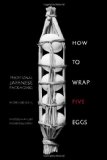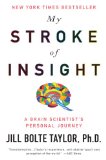Here is the final set of this year’s book recommendations from artists whose work browngrotta arts represents. In the next posting, I’ll list the books Tom and have been talking up in 2010.


 Kiyomi Iwata finds The Human Condition, a six-volume novel by Junpei Gomikawa a continuing inspiration. Published between 1956 and 1958, Kiyomi says, “it is an epic novel about an ordinary man who tried to live true to his own soul during the Second World War.” It is not available in English, but a well-reviewed film version, Ningen No Joken, directed by Matsaki Kobayashi, can be found on DVD. Among Kiyomi’s favorite books are Hungry Planet: What the World Eats by Peter Menzel and Faith D’Alusio, who photographed 30 families in 24 countries – 600 meals in all, and Growing, Older: A Chronicle of Death, Life and Vegetables by Joan Gussow. And Kyomi casts another vote for Haruki Murakami as best in 2010, ranking 1Q84 as the best book she read this year. (Lena McGrath Welker selected Haruki Murakami’s Kafka on the Shore as her favorite read this year.) There are three volumes in the 1Q84 series, which has created a sensation in Japan. The first two have been translated into English and will be published by Knopf in September 2011. A third translation will follow.
Kiyomi Iwata finds The Human Condition, a six-volume novel by Junpei Gomikawa a continuing inspiration. Published between 1956 and 1958, Kiyomi says, “it is an epic novel about an ordinary man who tried to live true to his own soul during the Second World War.” It is not available in English, but a well-reviewed film version, Ningen No Joken, directed by Matsaki Kobayashi, can be found on DVD. Among Kiyomi’s favorite books are Hungry Planet: What the World Eats by Peter Menzel and Faith D’Alusio, who photographed 30 families in 24 countries – 600 meals in all, and Growing, Older: A Chronicle of Death, Life and Vegetables by Joan Gussow. And Kyomi casts another vote for Haruki Murakami as best in 2010, ranking 1Q84 as the best book she read this year. (Lena McGrath Welker selected Haruki Murakami’s Kafka on the Shore as her favorite read this year.) There are three volumes in the 1Q84 series, which has created a sensation in Japan. The first two have been translated into English and will be published by Knopf in September 2011. A third translation will follow.




 Nancy Moore Bess reports, “Some version of How to Wrap Five Eggs will always be on my coffee table, in my studio, or on my lap. The most recent purchase in a Tokyo used book bookstore is a boxed edition from the early 1970s and includes all the images we love, plus many photographs documenting the process of making. What a find! New workshops inspired me to reread (with some care) Kunio Ekiguchi’s Gift Wrapping: Creative Ideas from Japan which is much more than a book about giving gifts. Much of her introduction explains the connection between traditional packaging (tsutsumi) and gift wrapping (origata), something I had forgotten.” Nancy notes that her “art” reading has been devoted to trying to understand the “vocabulary of beauty.” She writes, “I have an old, dented copy from the Strand of Japanese Sense of Beauty. I have reread every copy of every book I own that discusses wabi-sabi in Japan. Diane Durston’s Wabi Sabi: The Art of Everyday Life is the one I keep by my reading chair. I can flip it open to any page and be delighted. Tim McCreight wrote two books I go back to: Design Language and Design Language: Interpretive Edition. I love the way these books all make me evaluate what I want to look at and touch.”
Nancy Moore Bess reports, “Some version of How to Wrap Five Eggs will always be on my coffee table, in my studio, or on my lap. The most recent purchase in a Tokyo used book bookstore is a boxed edition from the early 1970s and includes all the images we love, plus many photographs documenting the process of making. What a find! New workshops inspired me to reread (with some care) Kunio Ekiguchi’s Gift Wrapping: Creative Ideas from Japan which is much more than a book about giving gifts. Much of her introduction explains the connection between traditional packaging (tsutsumi) and gift wrapping (origata), something I had forgotten.” Nancy notes that her “art” reading has been devoted to trying to understand the “vocabulary of beauty.” She writes, “I have an old, dented copy from the Strand of Japanese Sense of Beauty. I have reread every copy of every book I own that discusses wabi-sabi in Japan. Diane Durston’s Wabi Sabi: The Art of Everyday Life is the one I keep by my reading chair. I can flip it open to any page and be delighted. Tim McCreight wrote two books I go back to: Design Language and Design Language: Interpretive Edition. I love the way these books all make me evaluate what I want to look at and touch.”

 For continuing inspiration, Helena Hernmarck returns to Gunta Stölzl: Bauhaus Master. The book includes dozens of key works by Stölzl accompanied by excerpts drawn from her journals, letters and articles. The writings offer an intimate view of the artist’s life and work as a student, a Red Cross nurse during the war, student and then master of the weaving workshop at the Bauhaus in Weimar and Dessau and founder of her own hand-weaving business in Zurich. “The illustrations are beautiful,” says Helena, “and it’s so interesting to read Stölz’s impressions of what occurred at the Bauhaus, as it was happening.” Helena is currently reading My Stroke of Insight: A Brain Scientist’s Personal Journey by Jill Bolte Taylor. Taylor, a Harvard-trained neuroanatomist experienced a massive stroke at 37 when a blood vessel exploded in the left side of her brain. It would take eight years for Taylor to heal completely. The stroke taught Taylor that the feeling of nirvana is never more than a mere thought away and can be accessed by stepping to the right of our left brains.
For continuing inspiration, Helena Hernmarck returns to Gunta Stölzl: Bauhaus Master. The book includes dozens of key works by Stölzl accompanied by excerpts drawn from her journals, letters and articles. The writings offer an intimate view of the artist’s life and work as a student, a Red Cross nurse during the war, student and then master of the weaving workshop at the Bauhaus in Weimar and Dessau and founder of her own hand-weaving business in Zurich. “The illustrations are beautiful,” says Helena, “and it’s so interesting to read Stölz’s impressions of what occurred at the Bauhaus, as it was happening.” Helena is currently reading My Stroke of Insight: A Brain Scientist’s Personal Journey by Jill Bolte Taylor. Taylor, a Harvard-trained neuroanatomist experienced a massive stroke at 37 when a blood vessel exploded in the left side of her brain. It would take eight years for Taylor to heal completely. The stroke taught Taylor that the feeling of nirvana is never more than a mere thought away and can be accessed by stepping to the right of our left brains.
